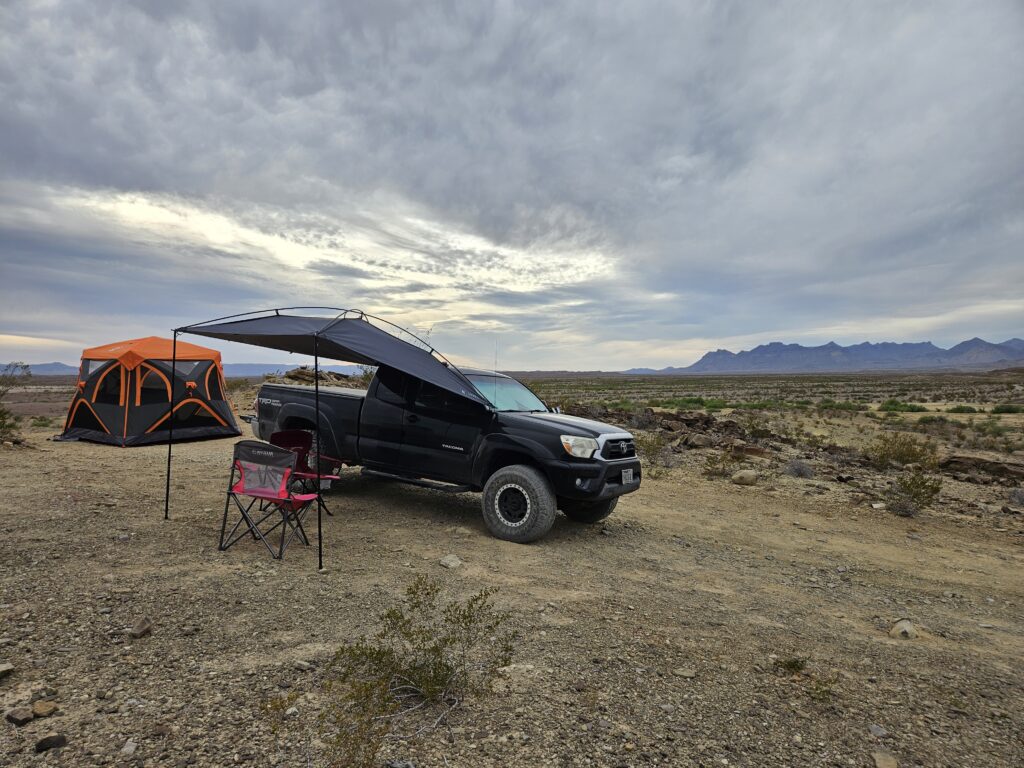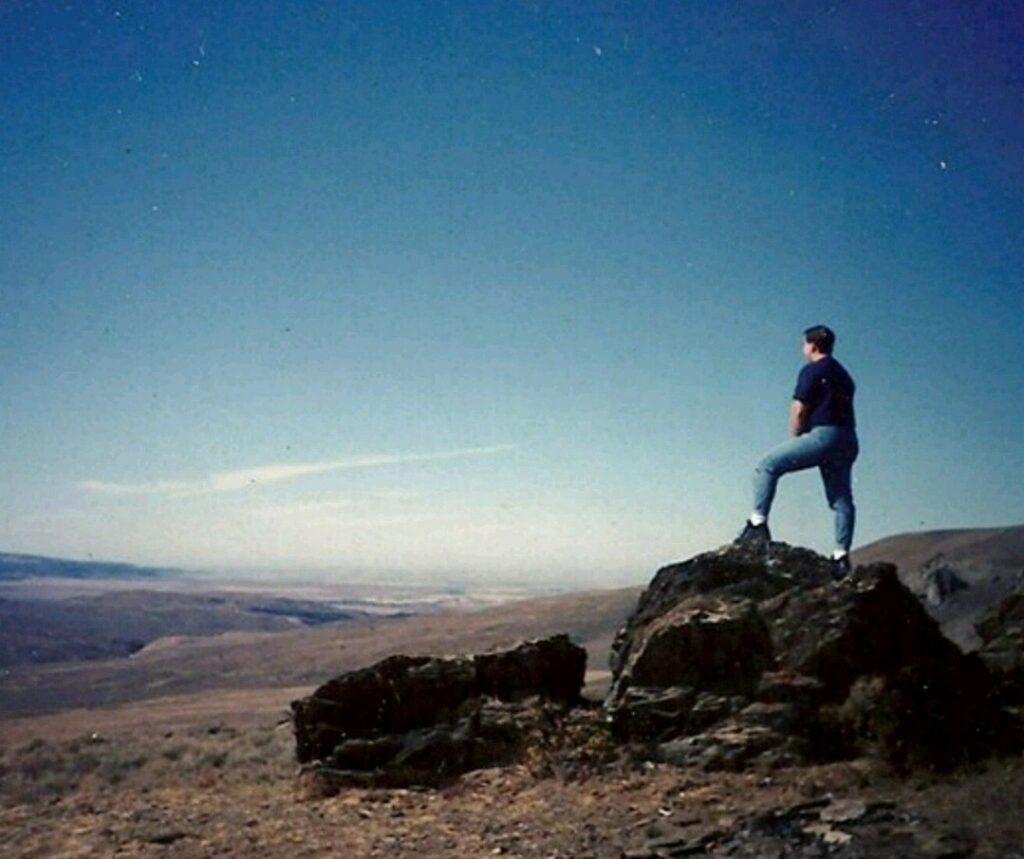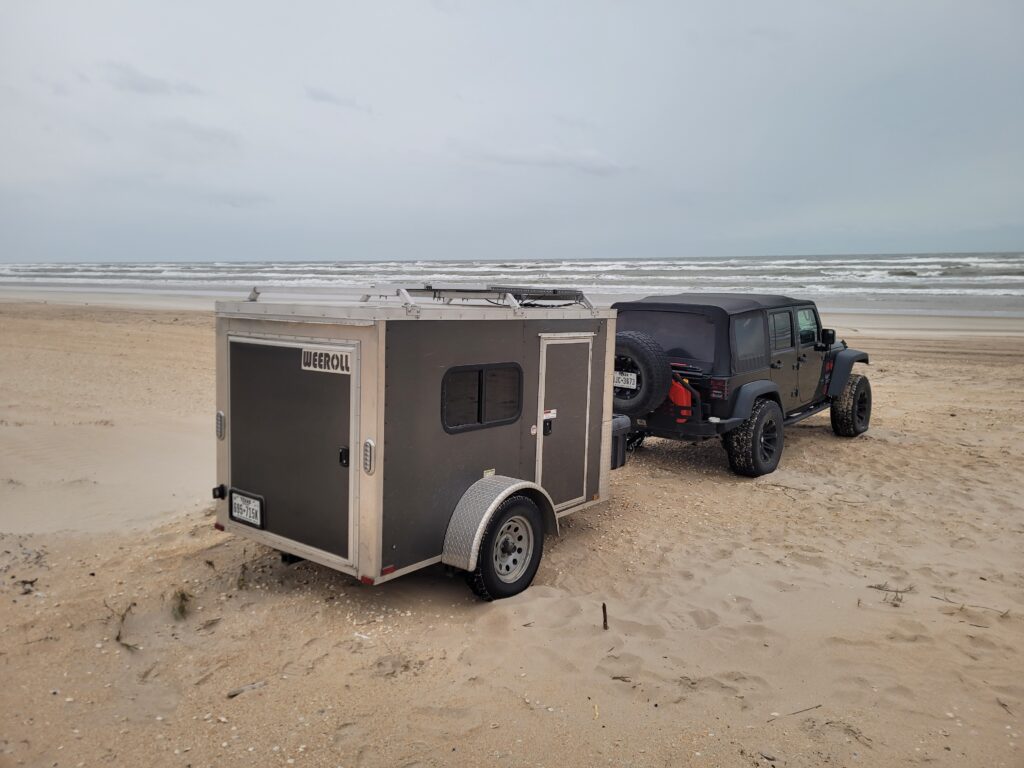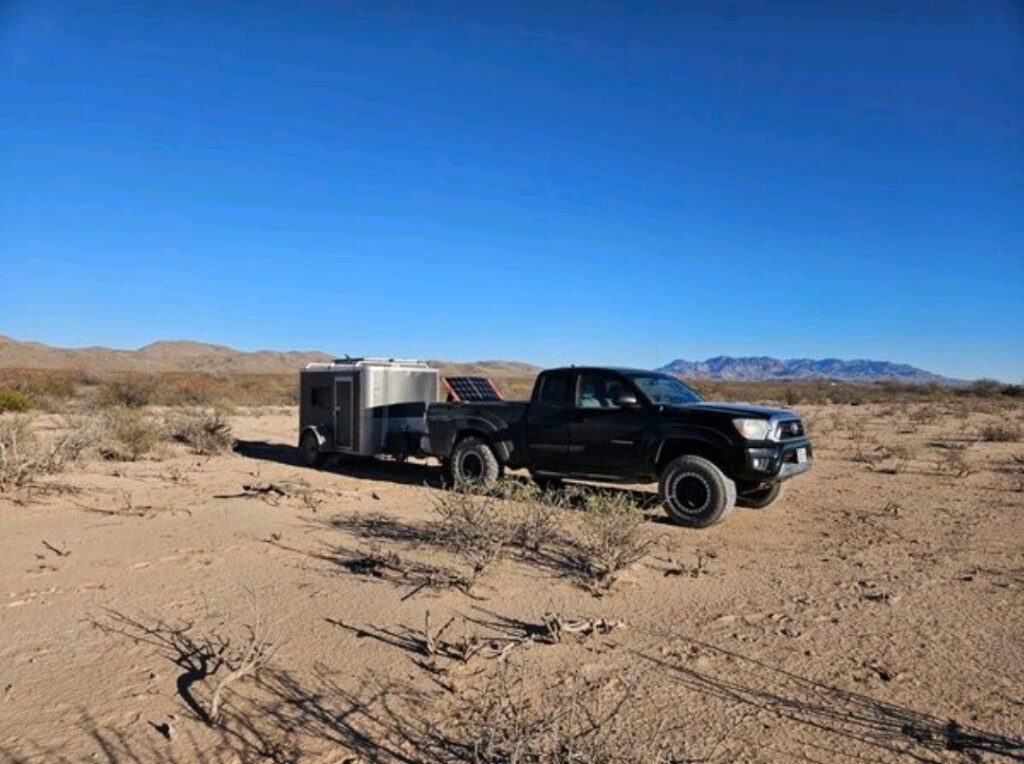
There are a couple of tragic events that happened a few years ago that made me rethink the level of preparation required for overlanding. One involved a man who died in Death Valley National Park after suffering multiple flat tires, no remaining spares, and—critically—no water. Around the same time, a stepfather and two sons ran into trouble at Big Bend National Park. Sadly, the stepfather and one of the boys didn’t survive.
These deaths were unnecessary. They were preventable. That’s what hits the hardest.
As someone who regularly overlands in remote parts of Texas and the Southwest, I carry gear that isn’t about comfort—it’s about survival. If you off-road or overland, you need to start thinking the same way.
One preliminary note: If you plan in advance and travel as a group, you can spread out the load. Not every single person needs to carry every piece of recommended gear. With good communication and coordination, you can distribute redundancies among vehicles or individuals so that as a group, you’re covered without duplicating everything across the board. Just make sure everyone knows who has what—and that it’s accessible when needed.
Water: The First Priority
The average person needs at least one gallon of water per day for drinking and basic hygiene. In hot climates or when physically exerting yourself, you may need double that. The best place to store your water is in your body. Don’t ration unless absolutely necessary. Drink regularly and stay ahead of dehydration, because trying to recover from it after the fact is much harder—and riskier.
When I’ve been in Moab, I’ve noticed that restaurants hand you water the moment you sit down—almost like they’re trying to get you to drink it before you realize what’s going on. At first, it feels a little suspicious, like, “What’s in this?” But they’re not trying to poison you—they’re locals, and they know what’s coming. Dehydration in dry heat doesn’t feel like you expect. You don’t sweat the same way, and you won’t always feel thirsty until it’s too late. It’s the same reason my Drill Sergeant in basic training, Sergeant Gamble, would walk around yelling “Drink!” all day. Staying hydrated is something you have to do deliberately, not reactively.
I always carry multiple gallons of water. It’s non-negotiable. And I always carry a way to purify water—whether by filter, purification tablets, or boiling. Clean water is survival. Period.
Sustenance: Fueling Your Body
Food isn’t just comfort when you’re remote—it’s energy and clarity. I carry fresh food for short trips, but I always back that up with freeze-dried meals and emergency ration cubes. These are compact, calorie-dense, and shelf-stable, making them ideal for extended trips or situations where fresh food runs out.
When I leave my vehicle to hike, scout, or handle a situation on foot, I always carry water and emergency ration cubes on my person. It’s not enough to have food in your rig—you need to have the essentials with you in case you’re separated from your vehicle for any reason.
I also have multiple ways to cook. Redundancy matters here, too. I carry:
- A 12-volt lunchbox oven
- A butane single burner stove (note: butane is not cold-weather friendly)
- A dual-burner propane stove
Over the years, I’ve learned how to store and organize all this gear efficiently in my rig. I believe in redundancy because I’m not looking for someone to rescue me. I’m prepared to handle it myself. And even when it isn’t an emergency situation, being able to have a warm meal at the end of a long day on the trail is rewarding. Redundancy is king.

Shelter and Weather Readiness
You need to be ready for the weather—because the weather doesn’t care about your plans. Whether it’s blistering heat or a surprise hailstorm, exposure can turn a bad day into a fatal one. Always have a way to stay cool and stay warm, depending on the conditions.
I carry shelter options that provide shade and airflow in desert environments, as well as layers and rain protection to guard against the cold and wet. The motorcyclists I rescued in the Chihuahuan Desert had nothing with them—just their riding gear. Their “day ride” turned into a nightmare when a hailstorm hit and flash flooding stranded them. At best, they were in for a miserable night. At worst, they could’ve died from hypothermia. Emergency blankets are incredibly lightweight and compact, yet they can reflect up to 90% of your body heat—making them one of the simplest and most effective tools for preventing hypothermia in unexpected conditions.
A few extra pounds of shelter and insulation can be the difference between discomfort and a rescue—or tragedy.
Recovery Gear and Self-Rescue Tactics
I carry a winch, traction boards, and a full array of recovery gear—and I know how to use all of it. One self-recovery technique every off-roader should know is how to bury your spare tire as a deadman anchor point and winch off it when no trees or rocks are available. A high-lift jack can double as a manual winch in a pinch by using straps or kinetic rope to pull your vehicle a few feet at a time—slow, but potentially the difference between stuck and saved.
There’s also a lesser-known but effective method: a homemade winch using two logs. If you’re truly stuck and don’t have access to a winch, look up this time-tested bushcraft technique—it could save your rig.
Additionally, I carry:
- A full-size spare tire
- Tire plug kit
- GlueTread sidewall patch kit
- Viair air compressor
Now, let’s talk about the elephant in the trail: the full-size spare tire. For some reason, this is one of the most hotly debated topics in the off-road community. People will debate this to death in forums and Facebook groups like it’s a philosophical dilemma. News flash—it’s not. If you’re venturing into the middle of nowhere with no backup plan for a tire failure, you’re not being edgy or minimalist. You’re just unprepared.
No, I’m not saying you should try to drive Moab on a plugged tire or run a sidewall patch 100 miles. But you should be equipped to get back to civilization—on your own power. Because relying on someone else to bail you out is not a survival plan. It’s wishful thinking. When it comes to tires and repairs, people often lean on the most extreme arguments to justify not being prepared or to claim that every repair is unsafe—but I’m asking you to think logically: your life is literally at stake, as the 65-year-old man from San Diego tragically learned when he never made it out of Death Valley National Park alive…because of tire issues.

Communication is Critical: GMRS and FCC Licensing
I run GMRS radios and am licensed by the FCC. But having radios isn’t enough—you need to know the repeater frequencies and channels that are monitored in the areas you’re traveling to. Program your radio before the trip. A GMRS license is inexpensive at $35, valid for 10 years, and covers your entire immediate family — making it one of the easiest and most cost-effective ways to ensure reliable communication in remote areas.
Navigation Redundancy
I never rely on a single map source. I use:
- OnX Offroad
- Avenza Maps
- Garmin Nuvi 2597LMT (yes, old-school, but it doesn’t need a cell signal)
- Garmin eTrex 20x
- Paper maps – Always grab one from the ranger station or visitor center in any national park
Download offline maps before you leave. Even the Google Maps app works off GPS if the maps are preloaded.
Learn how to read a topographical map and carry a military-style azimuth compass. I hated land nav classes in the Army—but they’re invaluable now.
Power and Charging Redundancy
I carry:
- Jackery power stations
- Hard-mounted AGM deep cycle batteries charged via solar panels
- Jackery SolarSaga portable panels
- NOCO jump starter
- Jackery 12V vehicle battery charger
And should I need extended power, I sometimes carry a Champion dual-fuel generator that runs on gasoline or propane.
When you’re remote, there’s no AAA to call. Bring the power with you.

Fuel: The “Buy It When You See It” Rule
If I see fuel, I buy fuel—even if I’m at three-quarters of a tank. I also carry an additional 10 gallons of fuel mounted on my swing-out tire carrier.
Remote overlanding isn’t the time to roll the dice on range.
First Aid: Train and Maintain
I was a combat medic, and I still regularly refresh my skills. You should too. I carry:
- First aid kit (inspect for expired components regularly)
- Jase Case (emergency antibiotics)
I also highly recommend taking a Wilderness First Aid course. Knowing how to handle injuries when help is hours—or days—away could save your life or someone else’s.
The gear means nothing if you don’t know how to use it.
Tell Someone Your Plan
Before I go out, I tell someone where I’m going and check in when I arrive and when I leave. Don’t make others guess your location in an emergency.
Don’t Be a Liability—Be Ready
The less prepared you are, the more likely you’ll need someone else to bail you out. In some of the areas I travel, 911 doesn’t come. Recoveries can start at $1,000—if someone can even get to you.
Don’t explore with the assumption that someone else will save you. Be as prepared as humanly possible.
Other Essentials That Deserve a Place in Your Rig
A few more things to think about that often get overlooked:
- Eye protection – Dust, sand, or even a snapped winch line can cause permanent injury.
- Gloves – For recovery, firewood, or trail repairs.
- Headlamp with spare batteries – Hands-free lighting is a must when things go wrong at night.
- Notebook and pencil – For writing down coordinates, details, or leaving notes.
- Multi-tool or compact tool kit – Useful far more often than you’d think.
Sometimes it’s the smallest, simplest items that end up being lifesavers when plans go sideways.
The Most Critical Piece of Gear: SPOT X Satellite Messenger
Even with all the redundancies above, there’s one thing I carry that might matter most: a SPOT X Satellite Messenger with Overwatch service.
If everything else fails, SPOT X will still get help to you. It works independently of cell towers and is designed for situations where your life depends on communication. If those people in Death Valley or Big Bend had one, they’d probably still be alive today.
This isn’t just gear. This is your life. Prepare accordingly.
AND…
While I’ve used much of this gear in serious, high-stakes situations for myself, I’ve used it just as often to help others—people who found themselves stuck, stranded, or struggling because they weren’t prepared. Out there, you’ll always come across someone who didn’t bring enough water, skipped the spare, or thought cell service would be enough. Be the one with the tools, not the one hoping someone else shows up with them. Because someday, the person needing help could be you—and your preparation might be the only thing that keeps it from becoming a tragedy.
my4x4experience.com is where I share what I’ve learned, and I hope it helps others avoid becoming the next tragic headline.